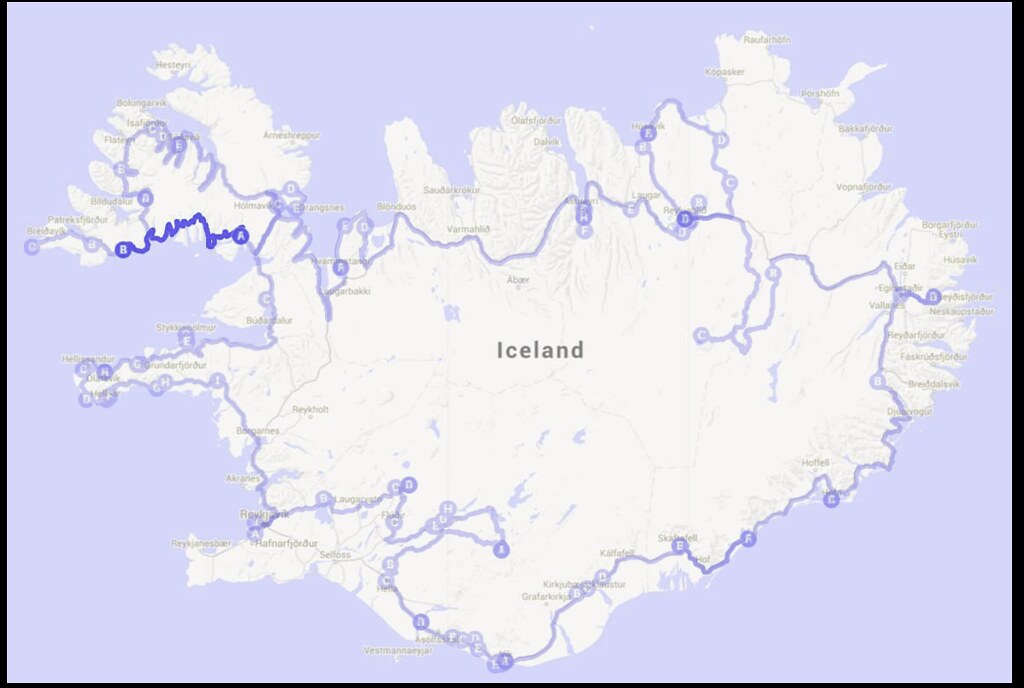
Highlights: Réttir at Innri-Múli (65.487355, -23.462206)
We woke up in the middle of nowhere on Day 16 to a cooling 9 degrees Celsius. We washed up, had breakfast, prepared some sandwiches for lunch and started our drive towards the réttir site.
Réttir at Innri-Múli
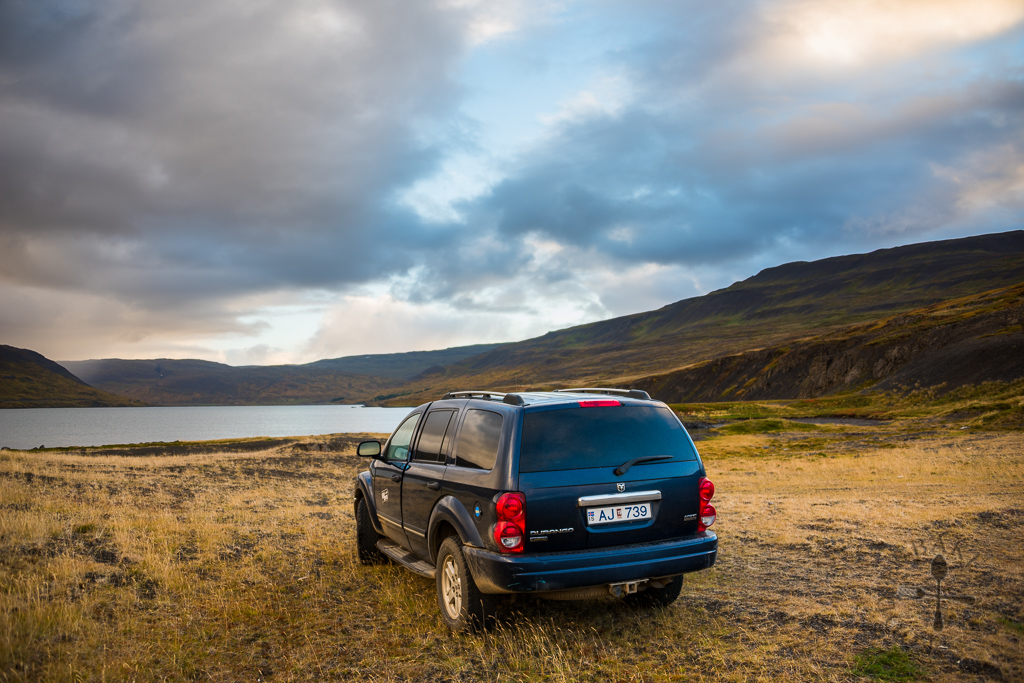
The drive was about 1.5 hours from where we camped the day before, and the views along the way were incredibly beautiful. We even spotted some rainbows!
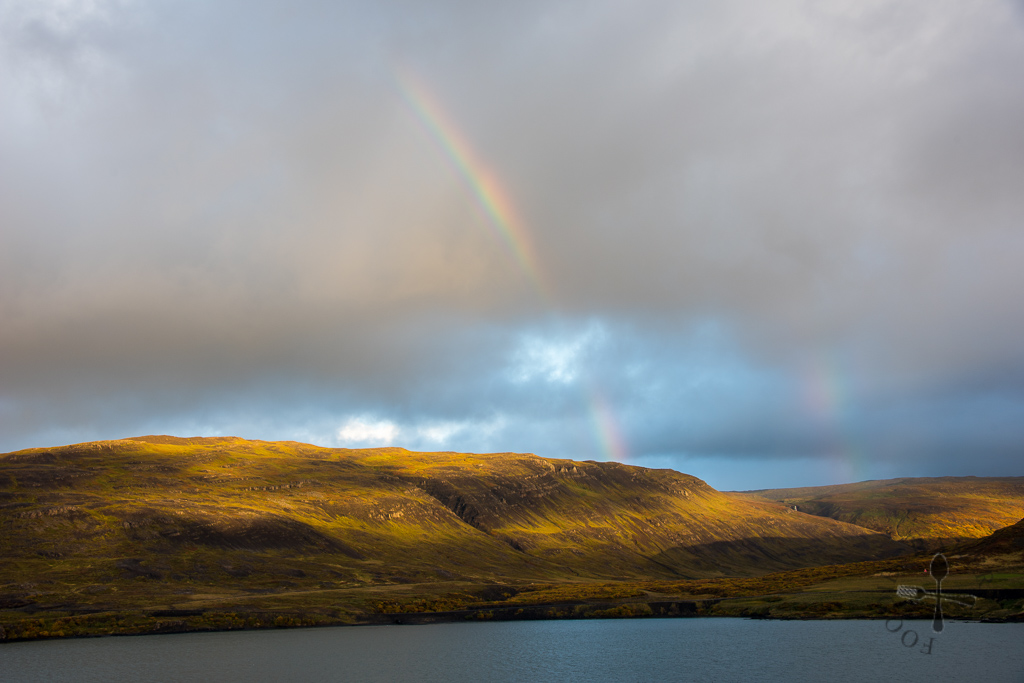
What is Réttir?
Réttir is an annual sheep round up and sorting event. In Iceland, the sheep are allowed to roam and graze all over Iceland from late spring to early autumn. In autumn, farmers within the same area will come together and round up their sheep, sort the sheep in a sorting pen also known as réttir, choose those to be sent to the slaughterhouse keep the rest for the next year. We learned about this activity the previous day when we spotted the locals herding their sheep with ATVs along the road. We found a website (will talk about it more later) that listed the réttir dates in Iceland, but we weren’t sure if it’s accurate. So when we visited the Museum of Sorcery and Witchcraft, we enquired with the staff there and after some checking, they told us that there would be one the next day at Innri-Múli!
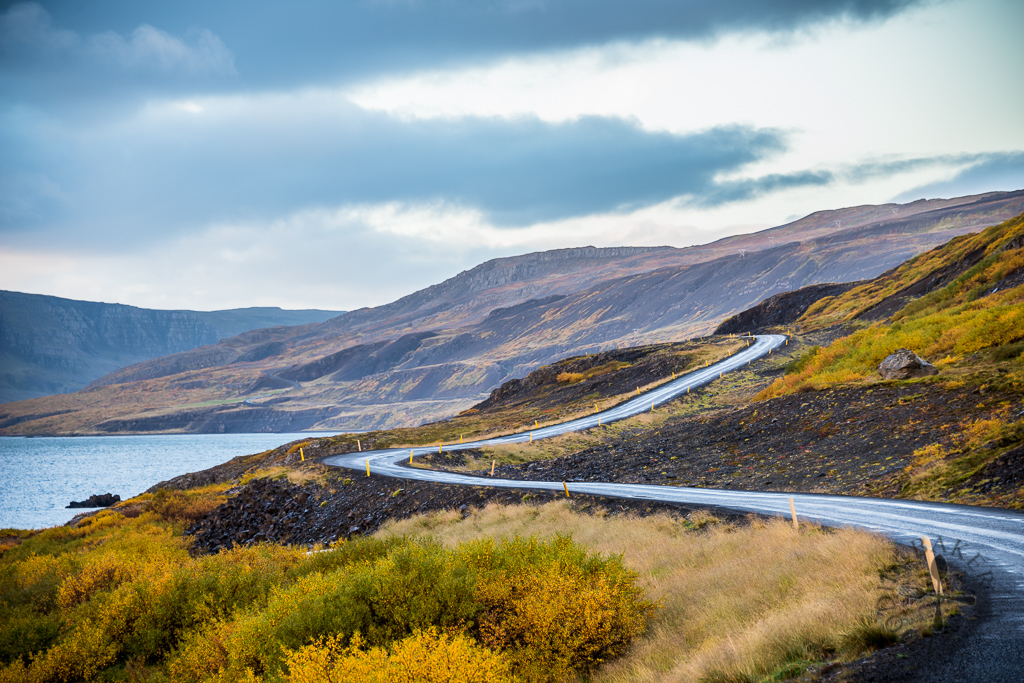
Réttir Dates
The website we found is bondi.is, the Iceland Farm Association website which provides the dates of all the réttir for the farms. The information is usually posted in late August, so the one for 2016 will probably be out in next week (take a look at 2015’s article here). As the website is in Icelandic, we used the Google translate in Chrome browser to navigate the website. You can type “réttir” in the search bar to search for articles related to réttir, and hopefully one on the dates for 2016 will be out soon!
Update 31 Aug 2016: The dates for 2016 réttir are out! Head over to this website to see them!
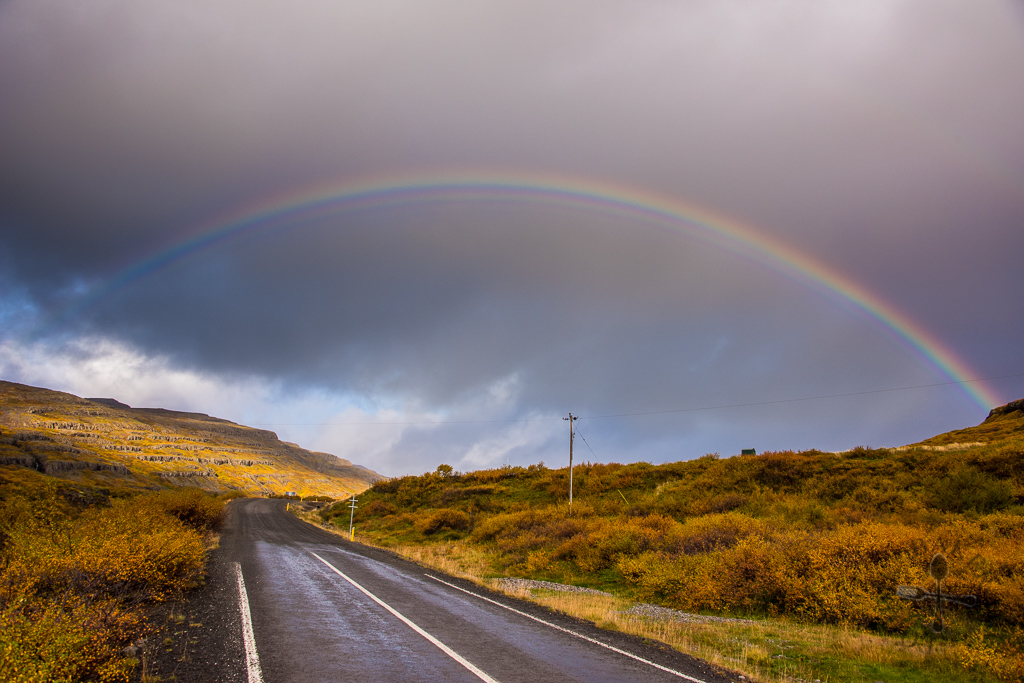
The weather was a tad gloomy with drizzles as we cruised along Route 62, enabling us to see quite a few rainbows along the way. However, we were wishing that the rain would stop – it would be hard to take photos in the rain! Thankfully, the rain cleared around noon, giving us a cooling weather to experience the réttir.
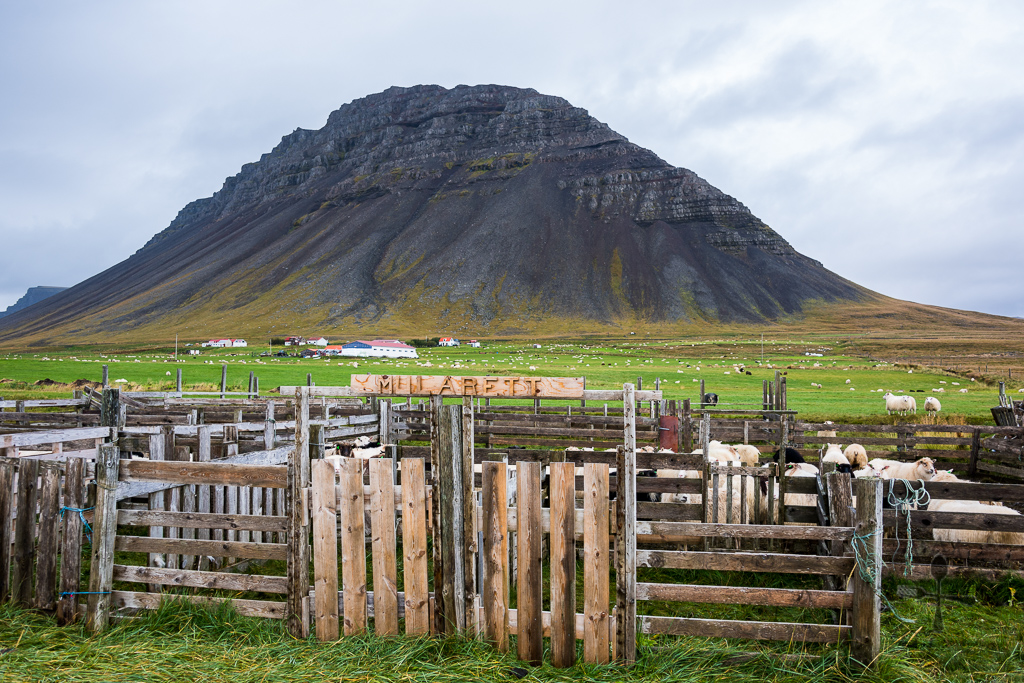
After 1.5 hours of driving and enquiring with some locals on the directions, we reached Innri-Múli at around 11 a.m. Apparently the main action had not started so we had our sandwiches in the car first. After about an hour, we saw a group of locals herding sheep into a large enclosure and after a quick chat, Ásgeir, one of the owners of the Innri-Múli, generously invited us over to his house for lunch.
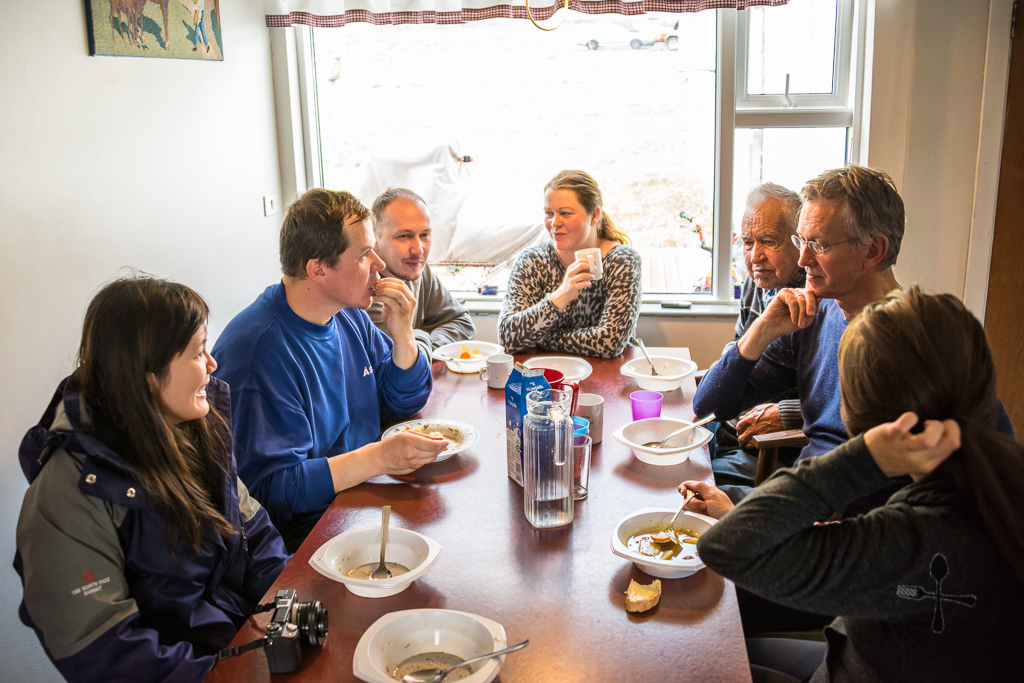
Innri-Múli
Innri-Múli, a 50-year-old, second generation farm, is the largest farm in the area with over 2,000 sheep. Svein, who is 89 years old this year, is the first owner and now his 2 sons, Ásgeir and Barði, run the farm. Svein also used to run a petrol station at the farm but it was closed 3 years ago. The family was warm and friendly and after a hearty meal, they asked us if we would like to help out in herding another batch of sheep with them and the other farmers – and of course we said yes! As we herd the sheep, let me talk more about sheep farming in Iceland!
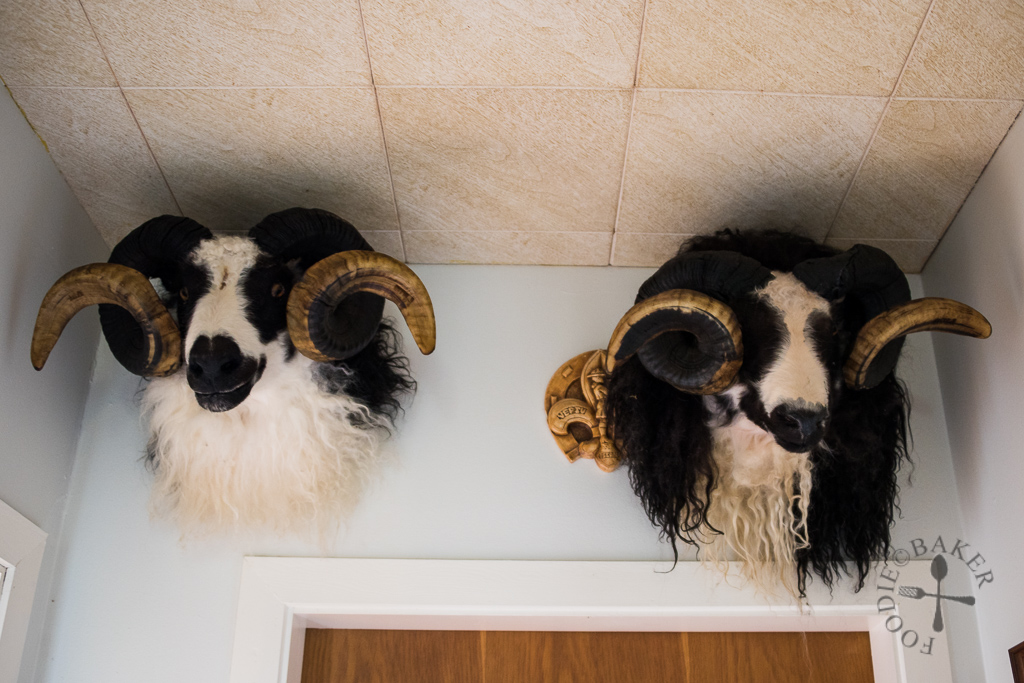
Icelandic sheep were brought into Iceland by the vikings from 874 to 1100 AD, and over the years became a strong and hardy breed which has adapted well to Iceland’s climate. Icelandic sheep are either horned or polled (without horns), and it’s not just rams (male sheep) will have horns, ewes (female sheep) can have horns as well. While 2 horns are the norm, some sheep can have up to 6 horns (quite creepy huh!)
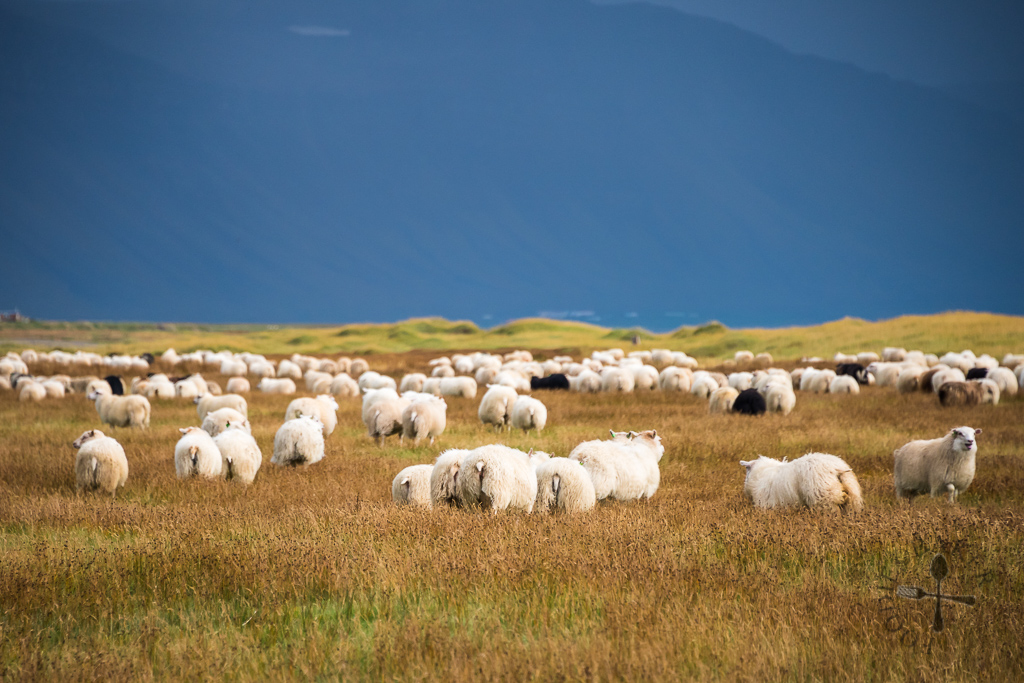
Winter / Spring
The breeding of sheep starts in December – in Innri-Múli, 1 ram (male sheep) would be put with about 20 ewes (female sheep) for breeding. Farmers will usually choose a ram with traits they want to pass it on to the offsprings. The gestation period is about 143 days, so lambs are born in early May, with most ewes giving birth to 2 lambs or more. This will be one of the most busy periods for farmers as they want to ensure every birth is successful and they will help to pull out the lambs if needed. Every lamb will be tagged and named by an ear tag and an earmark. The lambs’ details will be recorded down and then uploaded in the Icelandic National Sheep Database so farmers can keep track of their sheep.
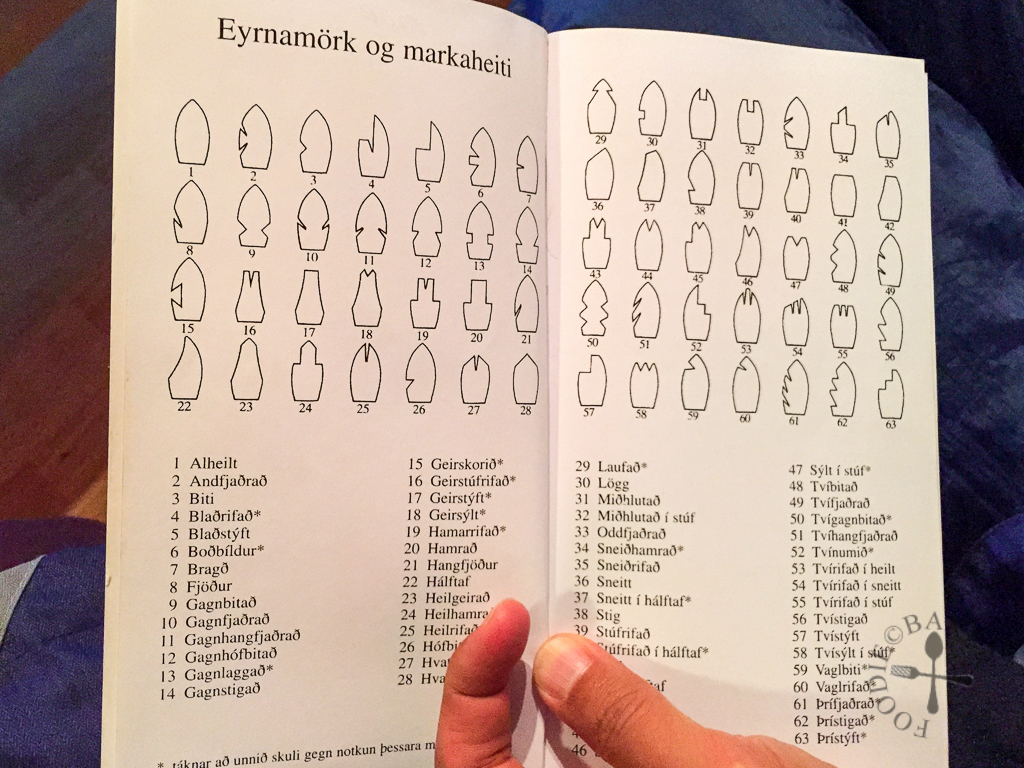
An ear tag is simply a plastic tag attached to the sheep’s ears, which will help farmers identify who the sheep belongs to. However, as ear tags may tear or break off, Icelandic sheep are also earmarked. An earmark is a cut in the ear of livestock animals – Icelandic farmers must register an earmark that is distinctive to them (no two farms have the same earmark) and every lamb will be earmarked with the registered earmark. Ásgeir showed us a booklet that contains 63 different earmarks (farmers can combine different earmarks), however, those with asterisks like 4 and 6 are no longer in use as they were deemed too painful for the sheep.
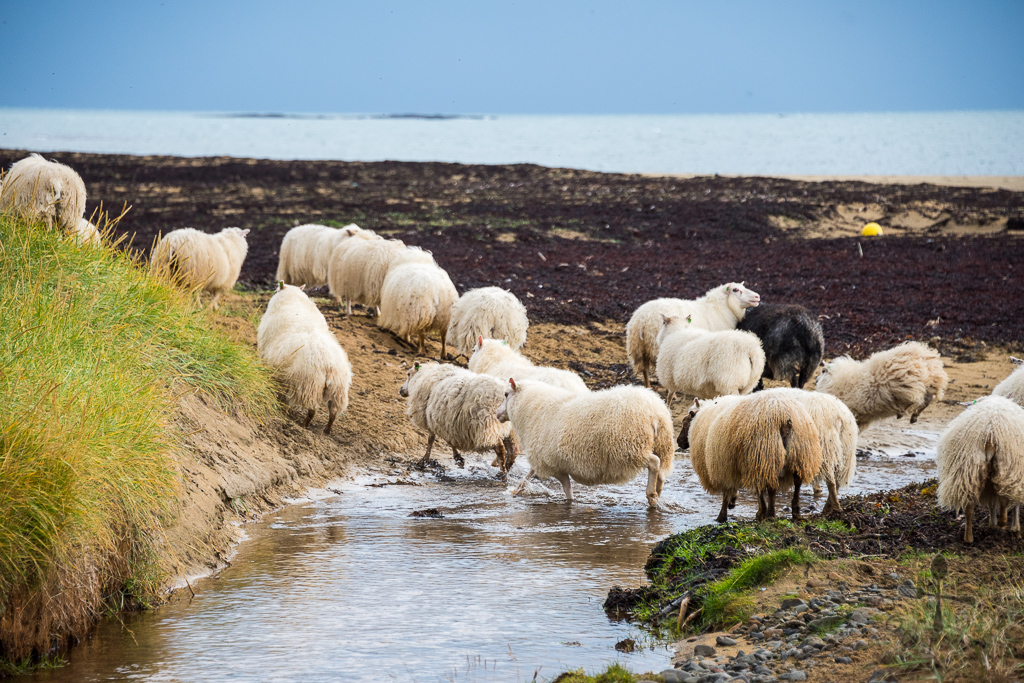
Summer
When summer arrives, the sheep will be sheared and set free – they will roam around the whole of Iceland for the next 3 months, eat and get fat. The dams (when an ewe becomes a mother, it is known as a dam) will guide their kids to feed on grass, forbs (herbaceous flowering plants), berries, and even seaweed! A lamb can leave the farm at around 7 kilograms and return weighing a whopping 30 to 40 kilograms! Even though the sheep are now away from home, the farmers do not get a chance to rest. They will be busy growing hay for the sheep to eat during winter. We learned from Ásgeir that each sheep can eat up to a staggering 100 kilograms of hay per month during winter!
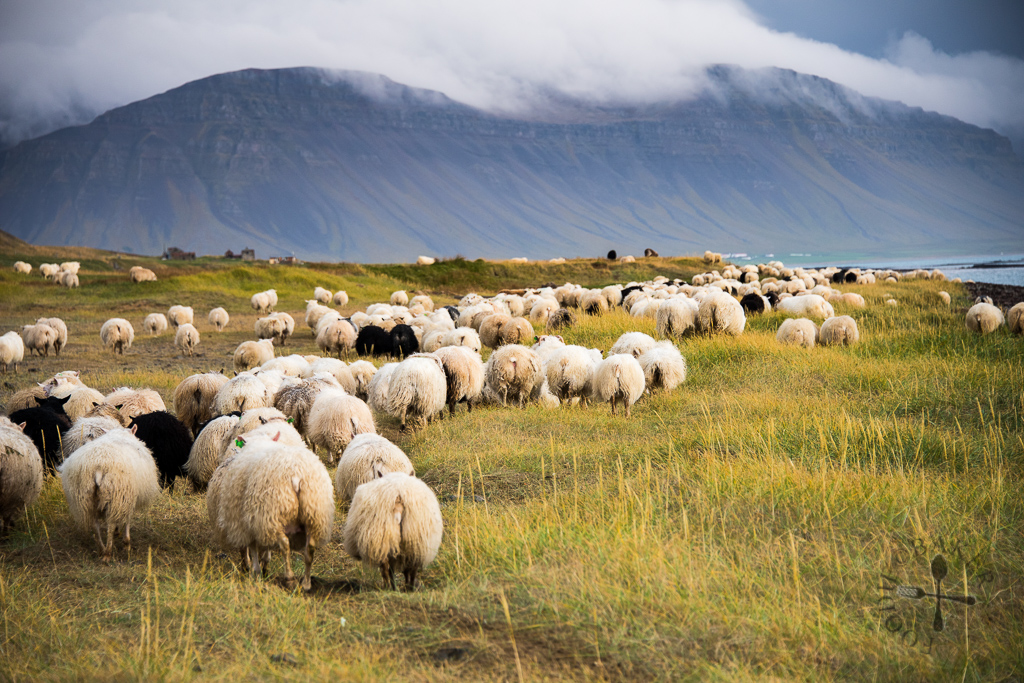
When the sheep are set free, won’t the farmers be scared that they will be lost? Apparently the sheep have their own habits and usually graze at the same location. With the farmers’ extensive experience, they usually have a good idea where their sheep will be. Ásgeir told us that they usually can recover 99% of their sheep every réttir, the remaining 1% will either turn up after winter or be lost forever in Iceland. Sometimes their sheep will be found by other farmers during réttir – they can either choose to go over and collect it or ask the farmers to help send the sheep to the slaughterhouse.
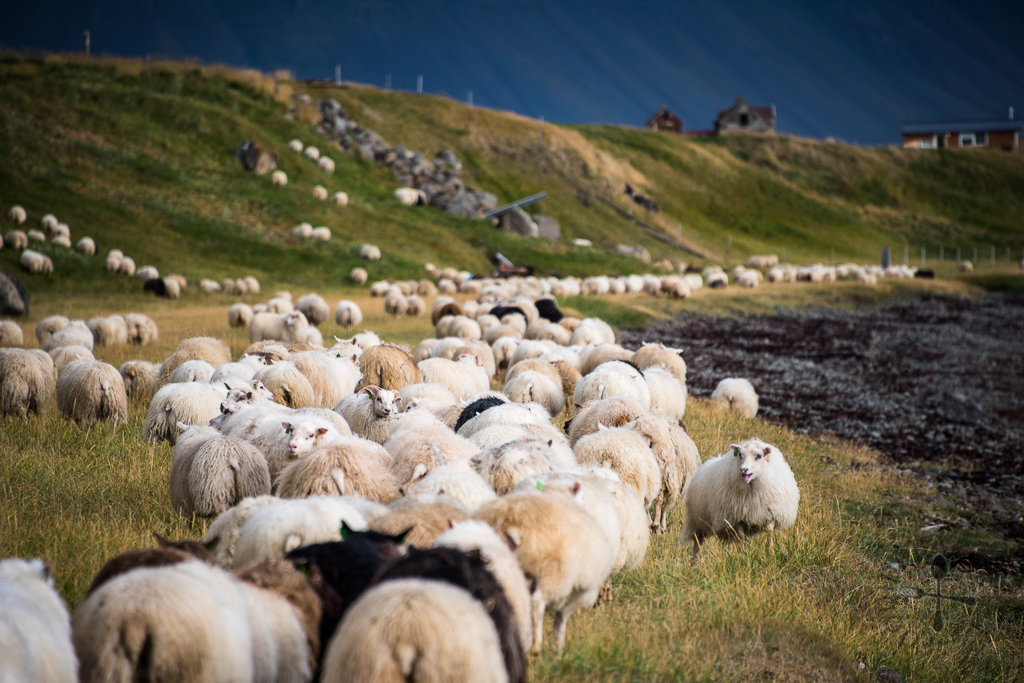
Autumn
As autumn arrives, it’s time to bring the sheep back home. While the sorting of the sheep takes only one day (which is the day of the réttir), rounding up the sheep can take up to a week as the sheep are everywhere. Some farmers use sheepdogs, ATVs, and even horses to help round up the sheep. As Innri-Múli is located in mountainous Westfjords, ATVs and horses aren’t much help here. The farmers hiked up and down the mountainous area with trained sheepdogs to bring the sheep home. Ásgeir’s relatives who are not living there will also come over and help out. It’s real hard work as they had to hike more than 120 kilometres over a week to find their sheep – imagine doing this every year!
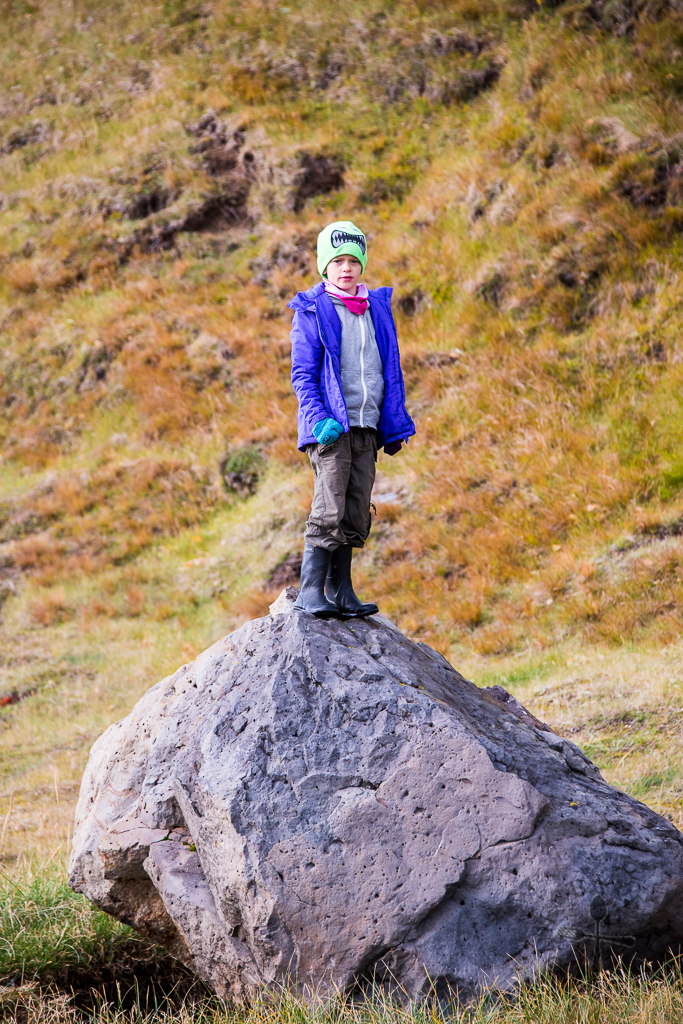
Every farm has a different date for réttir but they are all usually from late August to early October. Some farms are located in areas where there is lesser nutritious food for the sheep to graze. Hence these farmers will bring their sheep home earlier and feed them a type of protein-loaded vegetable to fatten them further – apparently they can gain 10 kilograms by just feeding on this vegetable for a month! There is no such problem at Innri-Múli as Westfjords have plentiful of vegetation.
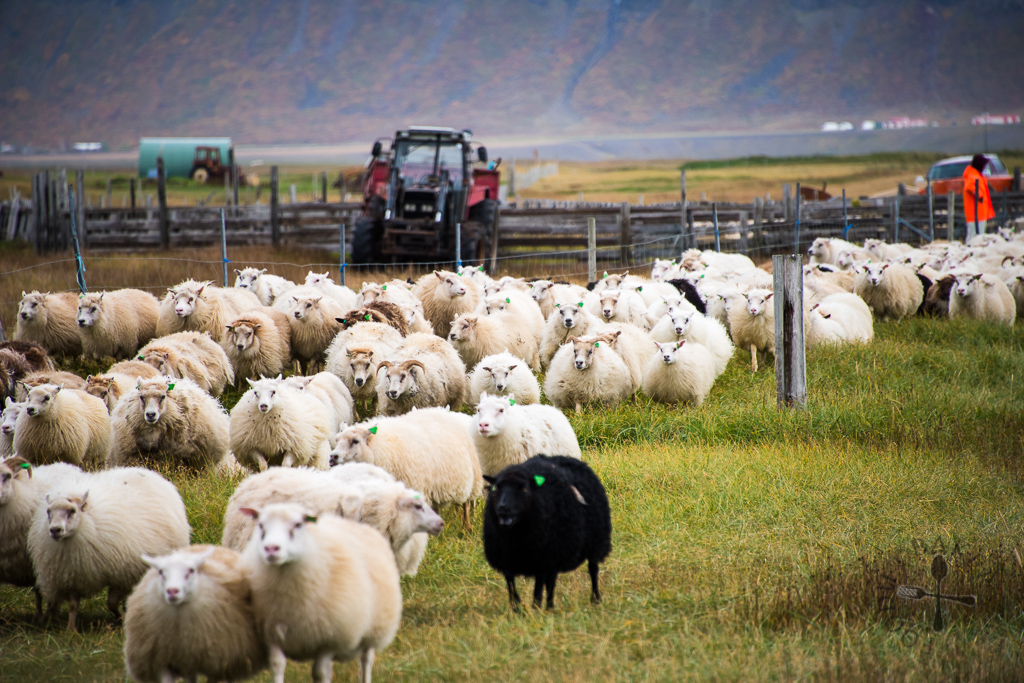
So we became part-time shepherds after our lunch and helped herd the sheep home by shouting “hoi” and waving our arms to keep the sheep moving. In general, the sheep are scared of us so most of them move along in the direction we wanted them to. However, there were some sheep that tried to “rebel” and dart in the opposite direction, probably trying to escape from us, so we had to chase after them and get them back in line. It was a shitty walk in the literal sense as we kept stepping onto sheep droppings.
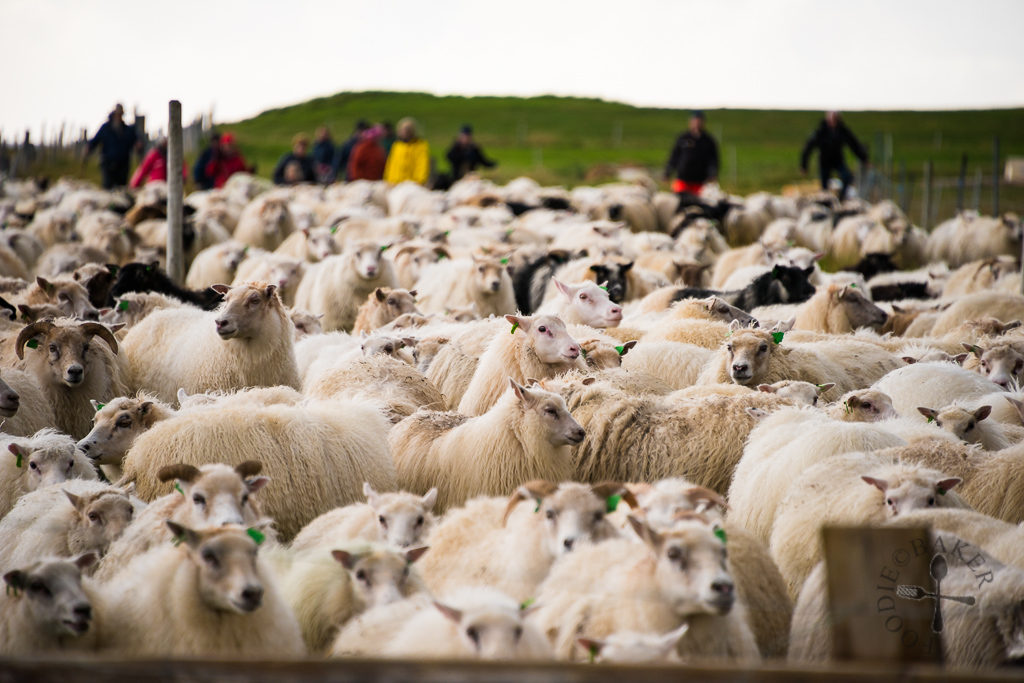
As the sheep herded all belong to different farmers, they need to be sorted so the farmers can bring their own sheep back home for the winter. In order to do this efficiently, the farmers utilises a sorting pen also known as réttir. The réttir is a round wooden enclosure with a huge round space in the middle and sections all around the round space (like this). Sheep are herded into the round space, identified by their ear tags and earmarks and dragged off to the section that belongs to the particular farmer. Apparently farmers have a mysterious connection with their sheep because Ásgeir said sometimes they know that particular sheep is theirs just by looking at their eyes (without looking at their ear tags or earmarks).
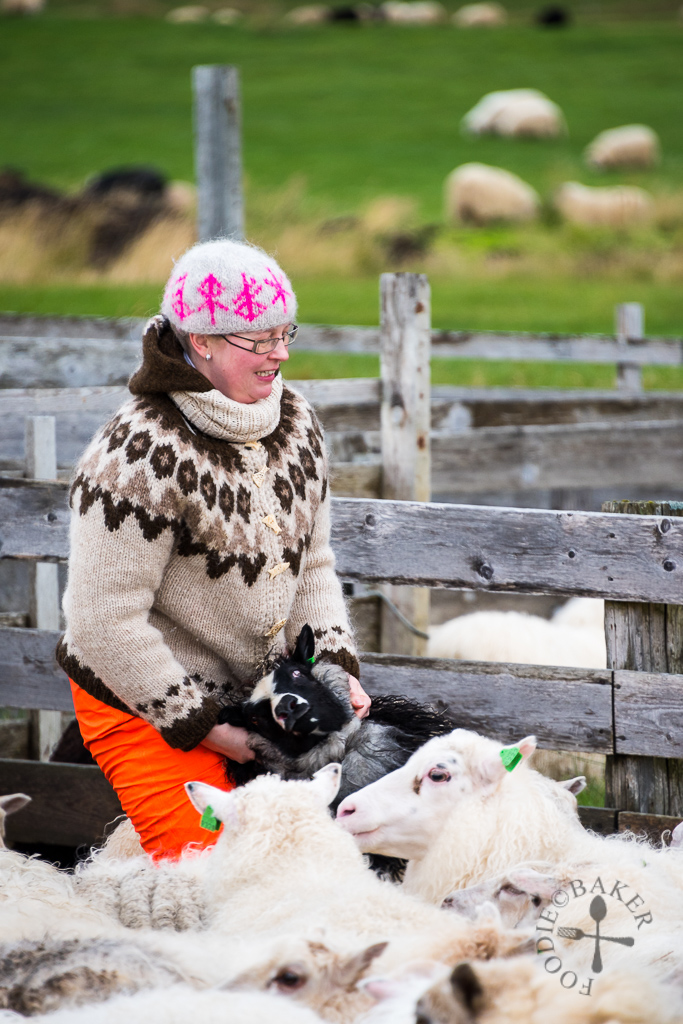 | 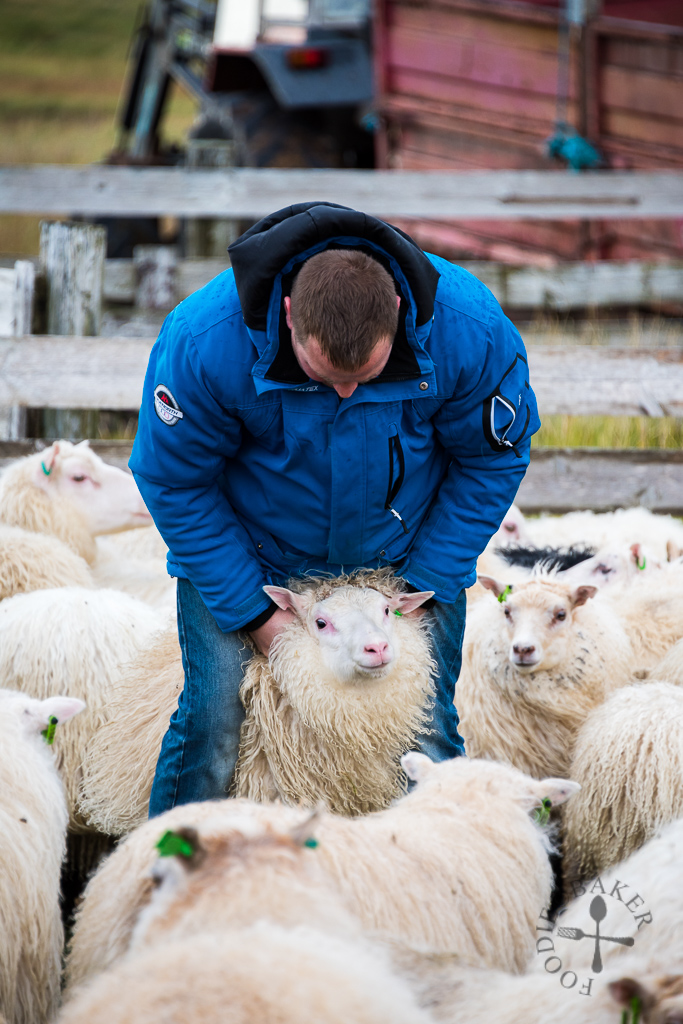 |
Ásgeir makes it sounds so easy but in reality, the sheep were scurrying about so much in the réttir that I couldn’t even get a good look at the ear tags or earmarks! When a sheep is identified, the farmer will stride across the sheep, grab it by its fur on the neck and drag it towards the section. The sheep will put up a good fight (or struggle?) so a tremendous amount of strength and effort is needed.
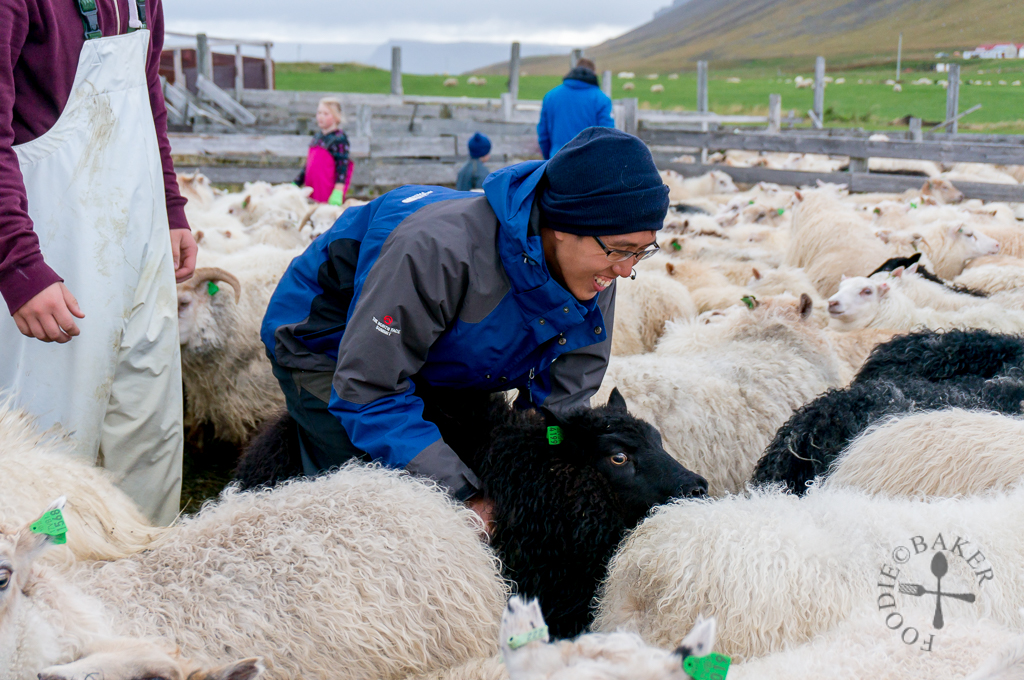
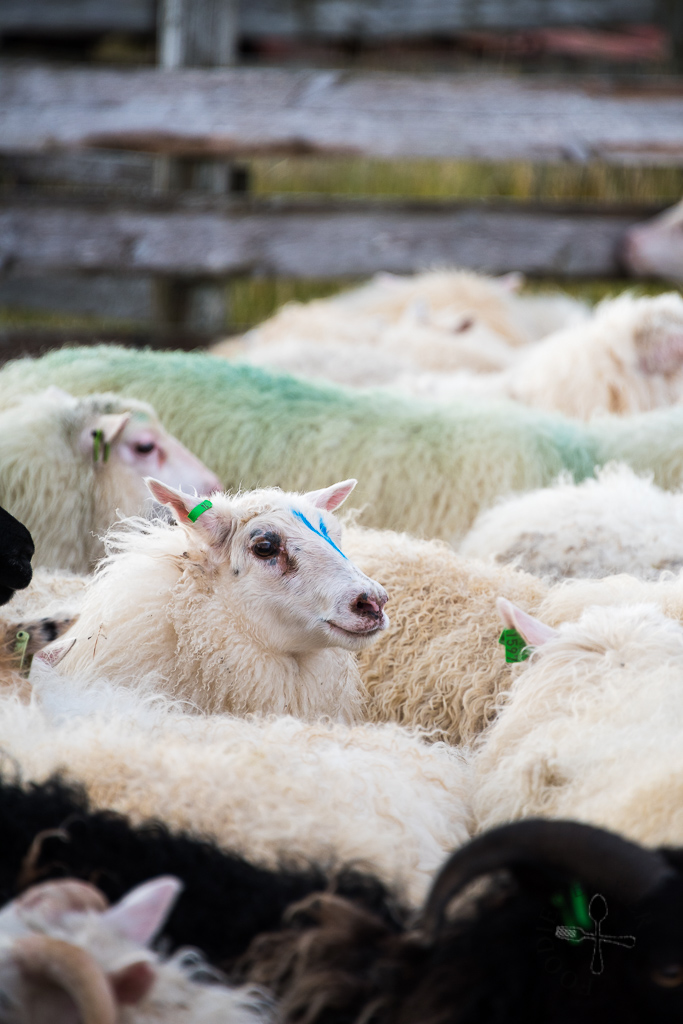 | 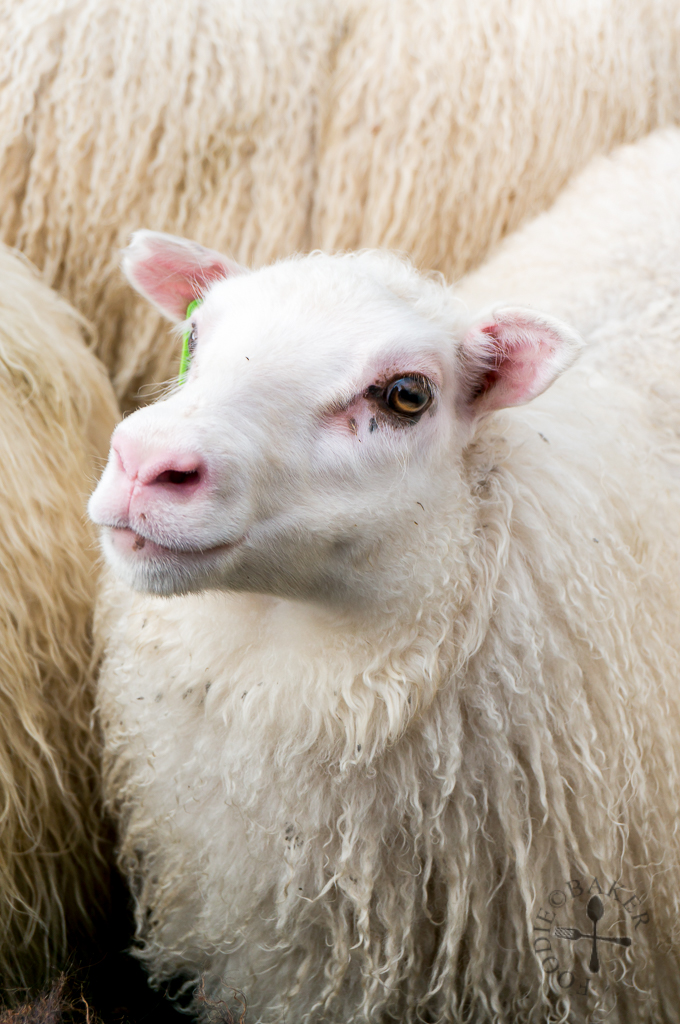 |
Out of the 2,000 sheep in Innri-Múli, 150 adult sheep and 1,000 lambs will become someone else’s Christmas dinner. See the blue colour mark on the sheep on the left above? This is a way for farmers’ to identify which sheep to be sold to the slaughterhouse. The slaughterhouse usually operates until the end of October and can process up to 3,000 sheep a day. The slaughterhouse is also responsible for packaging, processing and selling the meat and other lamb products.
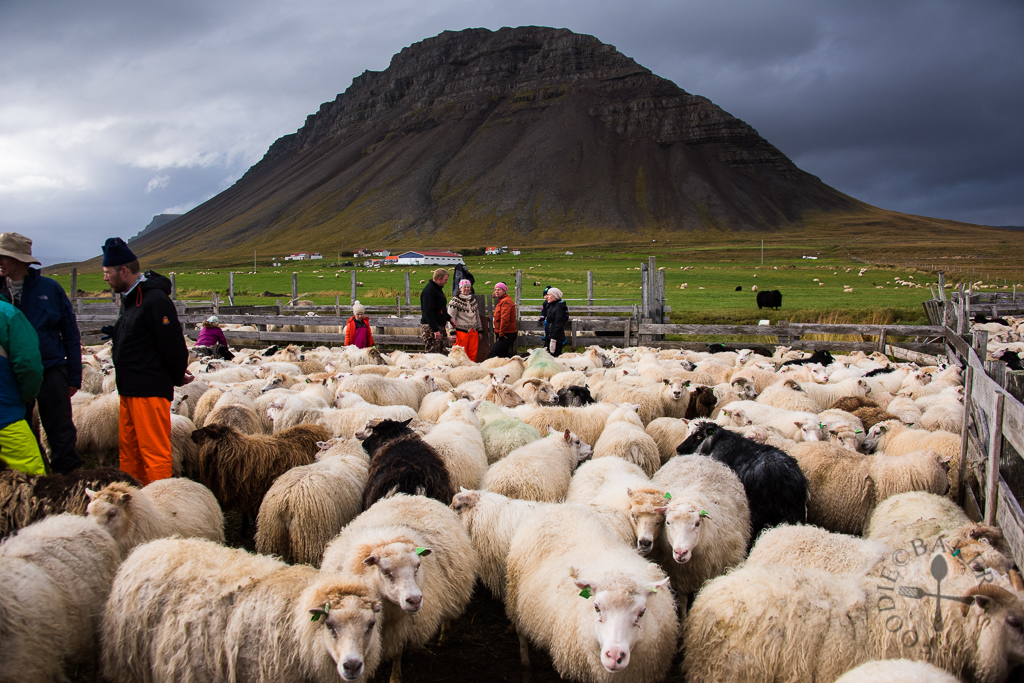
Once all the sheep are sorted, the farmers will proceed to bring them home. Some farmers don’t have a lot of sheep so they can transport them using a truck. For some they will have to herd the sheep again for a distance back to the farm. For Innri-Múli, the réttir is connected to their farm so they just have to open the fence to release their sheep back. They will choose the sheep to sold to the slaughterhouse in the next few days.
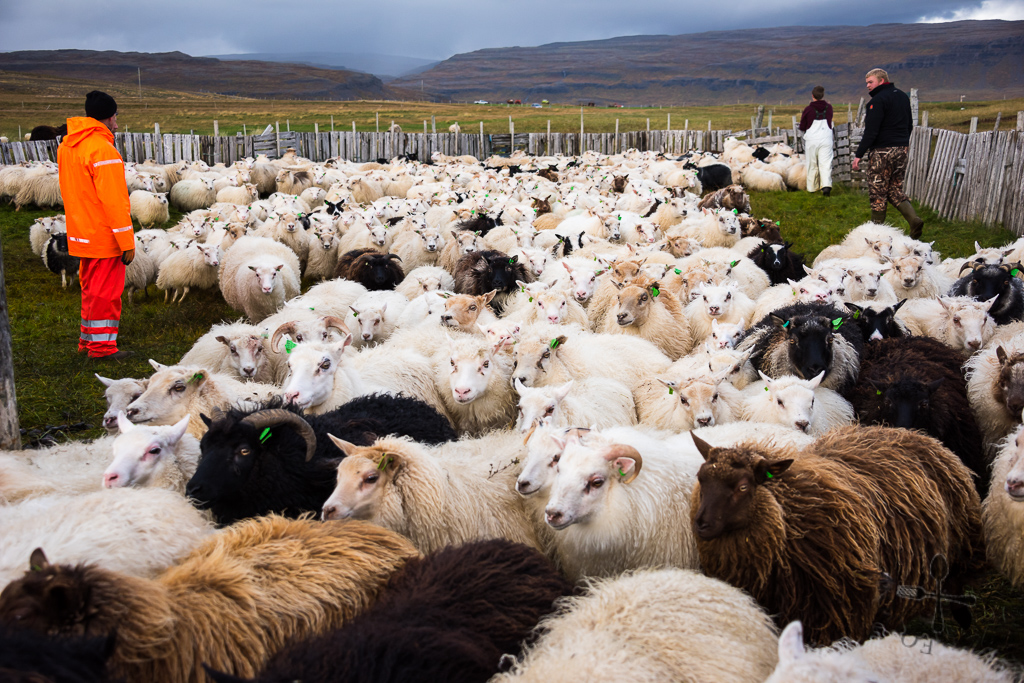
Lamb Cuisine in Iceland
There are plenty of delicious and some weird food made from lambs:-
Lamb meat: Icelandic lamb meat is exceptionally flavourful and lean, and is much loved in Iceland and overseas. We especially love the traditional Icelandic lamb soup and any grilled lamb meat because the meat is so tender and doesn’t have the gamey smell that we dislike.
Svið: Svið is a traditional Icelandic dish made with a… sheep’s head. The sheep head is cut in half and boiled after removing the brains. The sheep’s eyes (yes you read it right, eyes!) are considered a prized part and a delicacy.
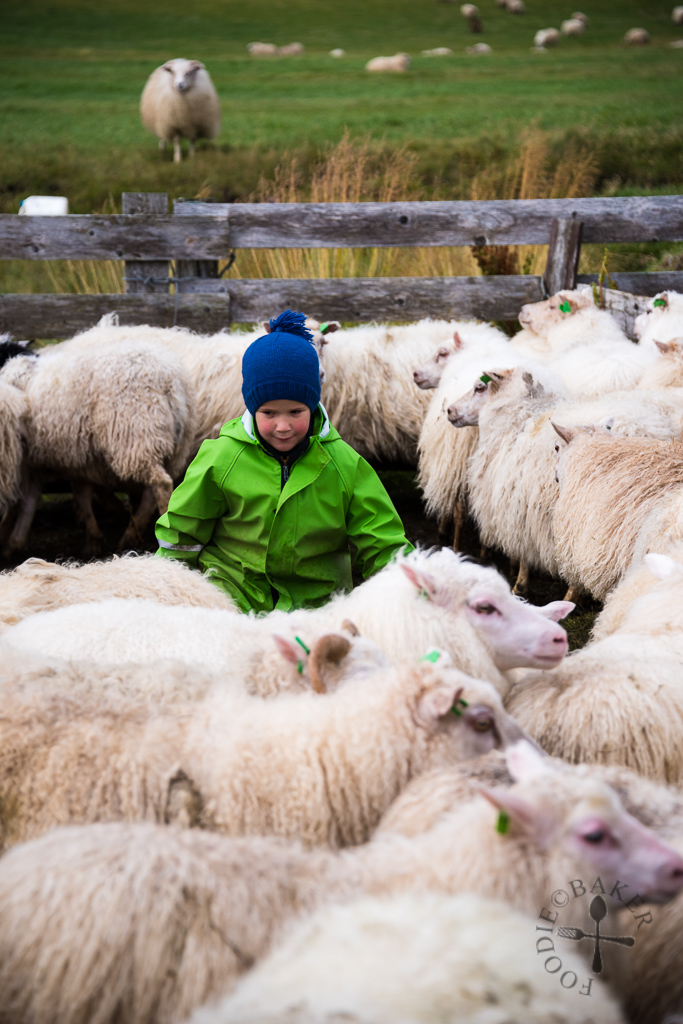 | 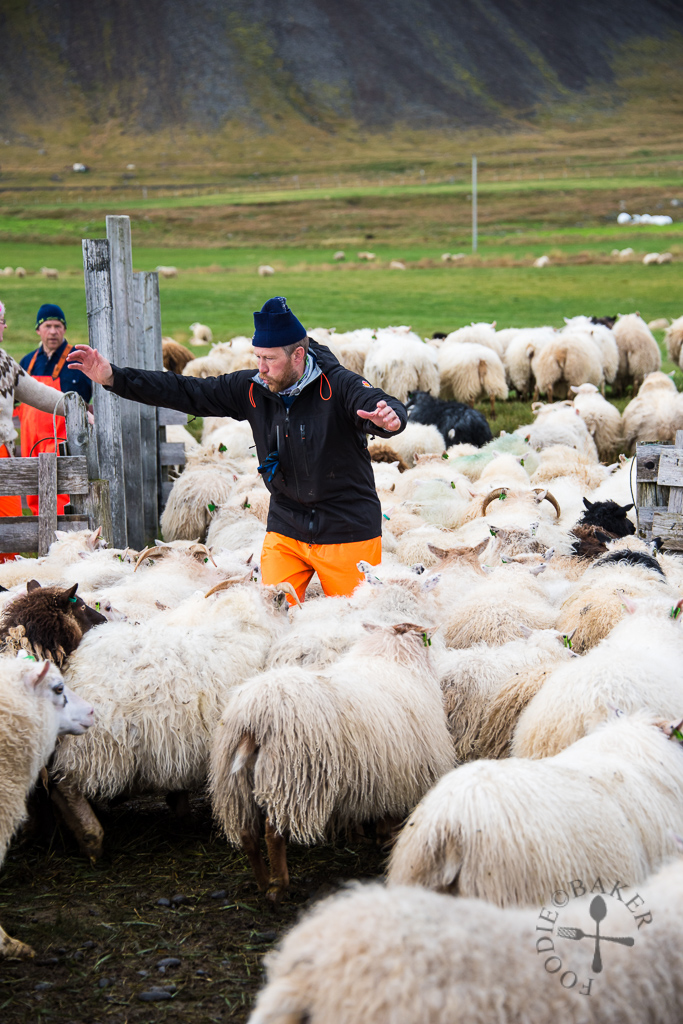 |
Súrsaðir Hrútspungar: Known as “pickled ram’s testicles”, the lamb’s testicles are compressed, boiled and cured in lactic acid. I don’t think I’ll ever try this!
Slátur: Slátur is an Icelandic food made from the innards of sheep. Slátur means “slaughter” in Icelandic, and there are two types of slátur, blódmör (blood pudding) and lifrarpylsa (liver sausage). Lamb’s blood, suet (a hard fat around the kidneys and loins which keeps the slátur tender), flour, oats and minced liver or kidney are mixed together and put into a pouch which can be sheep’s stomach, sausage skin etc. The pouch is sewn, then boiled for a few hours and it will look like a thick sausage. Discard the pouch and you will get slátur. Slátur can be sliced and pan-fried, served hot with potatoes or served cold with oat porridge, rice pudding, bread or crackers (like cheese). We had a chance to try it and it had a really strong, pungent taste that we weren’t used to.
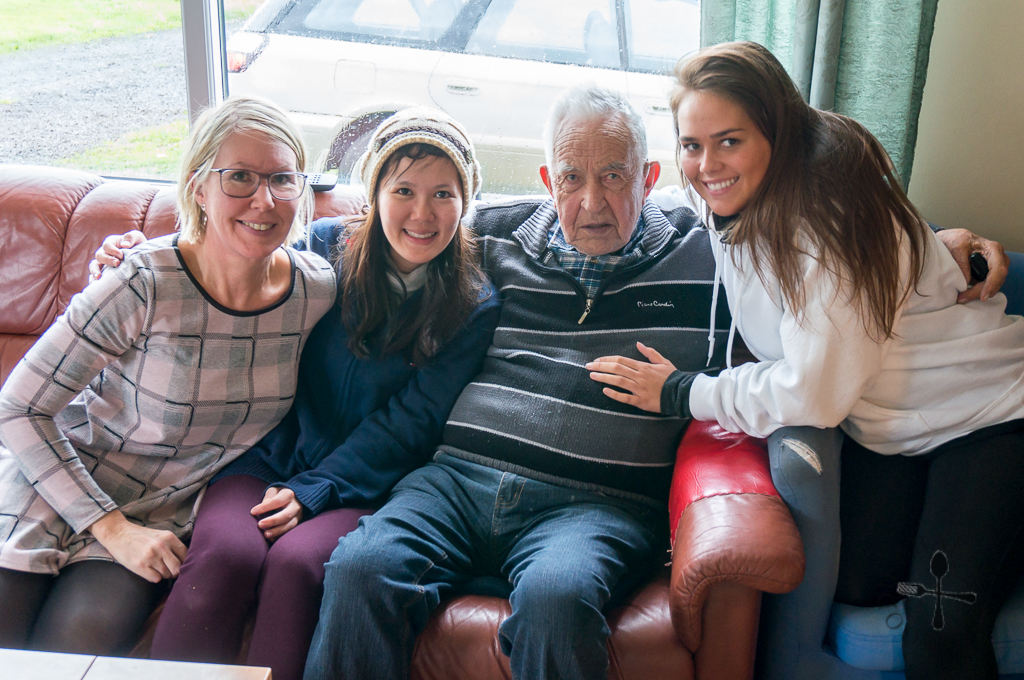
We head back to Ásgeir’s house for coffee and snacks after the réttir and they then invited us to stay for the night as the neighbouring campsites were already closed for the year. We were so grateful and thankful for their warm hospitality! We chatted with Ásgeir and his family that night and learned so much about sheep farming in Iceland, it’s definitely an experience that we will never forget for life. If you are in Iceland during late August to early October, do check whether there will be a réttir near you or make plans to go for one!
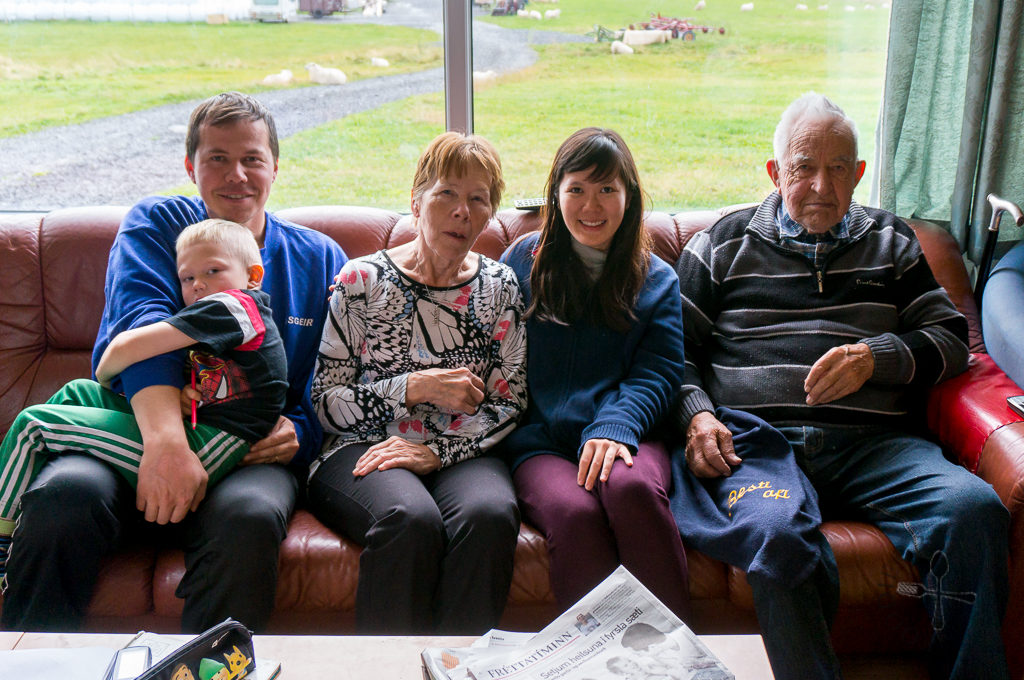
This trip is made possible with our partnership with Kuku Campers, who had kindly given us a media discount for the rental of our campervan.
Thank you so much Kuku Campers! All opinion and experiences blogged are still our own!
| ← Previous travelogue: Day 15 in Iceland | Iceland Itinerary | What’s next: Day 17 in Iceland → |
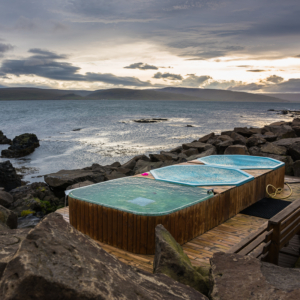 | 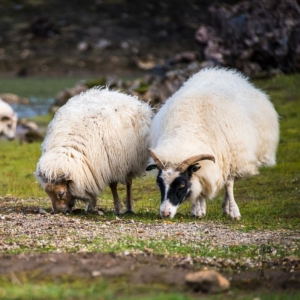 | 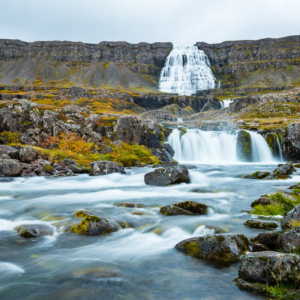 |
Patrick says
We are going to Iceland next summer and we are wondering which car rental we should take… Do you have any recommendation? I am looking into https://www.reykjavikauto.com or http://www.carsiceland.com or http://www.holdur.is
What do you think? Please advice
Jasline N. says
Hi Patrick, I’ve only rented from KukuCampers so I cannot provide feedback for other rental companies. You should check out TripAdvisor for other users’ feedback.